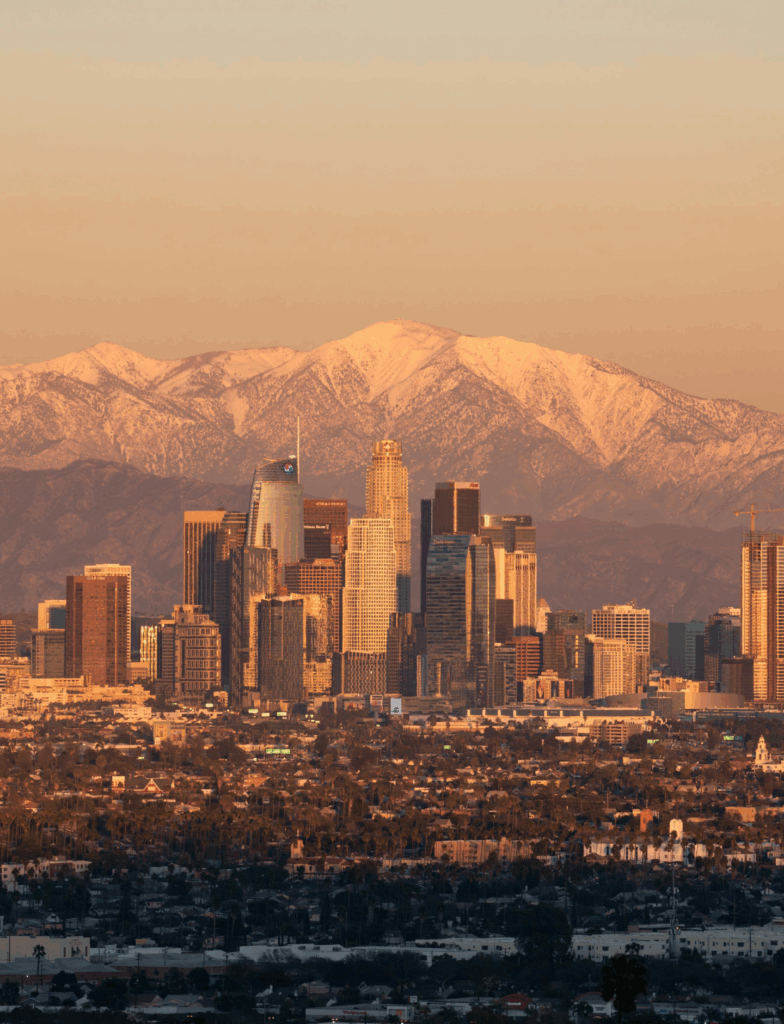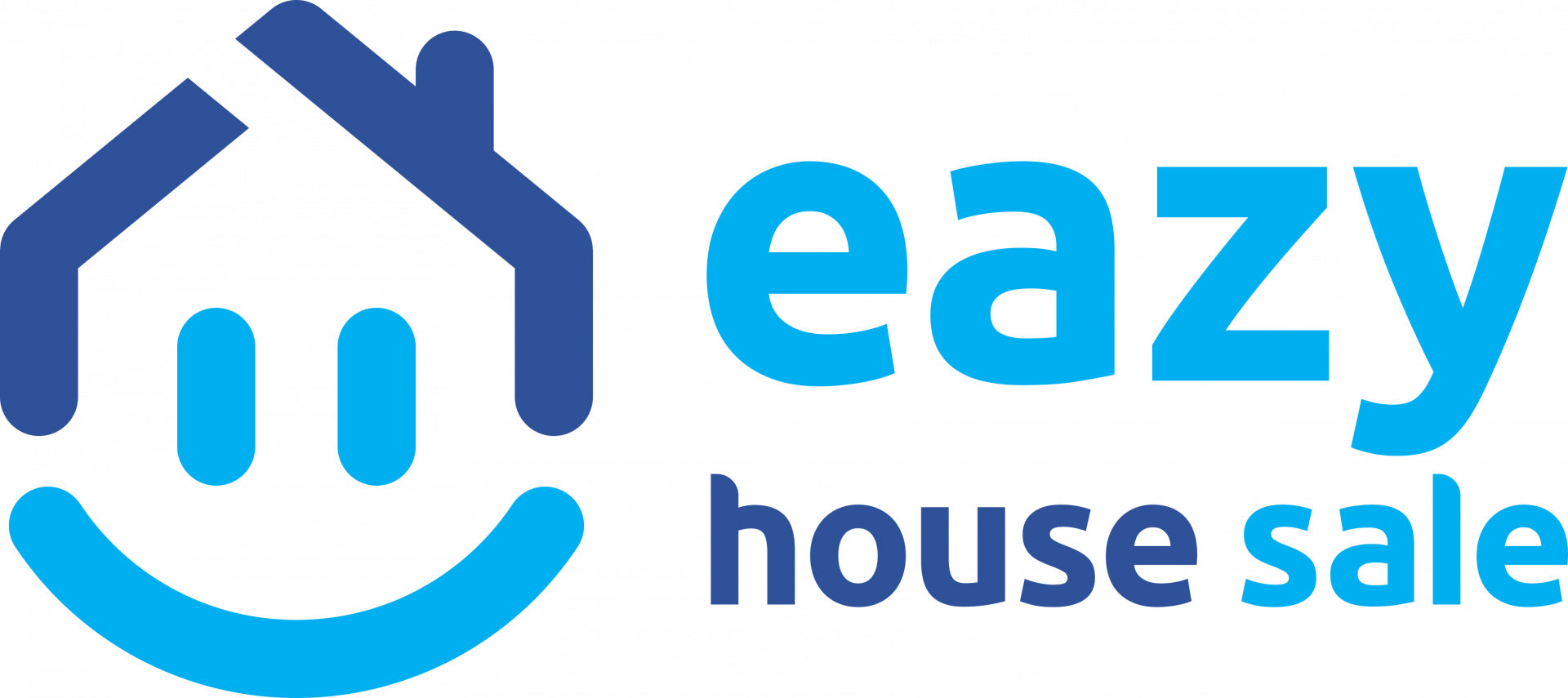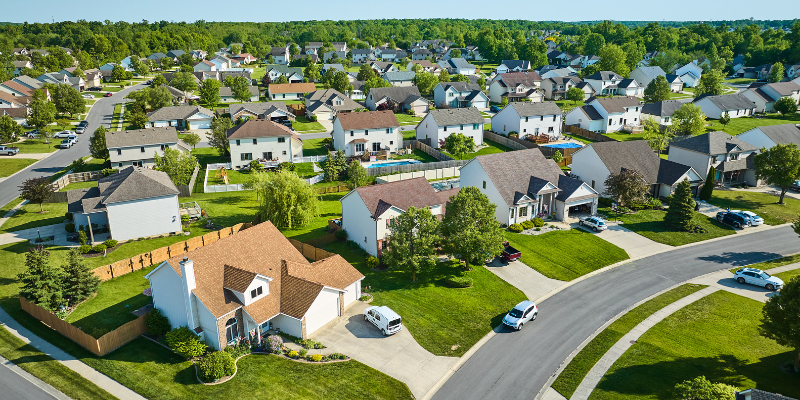
Explore Los Angeles like a local with Eazy House Sale‘s neighborhood map. Discover the unique character, landmarks, and hidden gems of each area across this vibrant city.
Understanding Los Angeles Neighborhood Maps
Los Angeles boasts a vibrant array of communities, each showcasing its distinct personality and allure. Grasping the arrangement of these lively neighborhoods is essential for both locals and tourists. Maps of Los Angeles neighborhoods offer essential information about district boundaries, aiding individuals in their navigation and planning efforts. These comprehensive maps clearly outline neighborhood boundaries while also acting as vital resources for exploring the city’s vibrant history. Whether you’re exploring the vibrant culture of the city or organizing your daily travels, these maps elevate your journey. Explore the complexities of Los Angeles district maps to gain a thorough insight into its vibrant areas.
The Importance of District Boundaries in Los Angeles, CA
District boundaries are very important for comprehending the communities in Los Angeles. They give the city a unique look and feel. These lines on a map are more than simply lines; they show the different cultures and history that are part of each place. An accurate Los Angeles neighborhood map shows the boundaries of neighborhoods, which can help you learn about community identity, local government, and public services. These maps show how district lines can change things like school districts and voting precincts. This shows how important it is to have a clear and accurate district map.
If you’re new to the city or thinking about moving, knowing where the neighborhood boundaries are will help you make decisions. With an Angeles map that clearly shows these limits, it’s easy to pick a neighborhood that fits your way of life. On the ground, the differences between communities like Echo Park, Silver Lake, and Westwood can be hard to see, but they are clear on maps. Each has its own set of amenities, cultures, and distances from prominent tourist spots, which are important things to think about when making a decision for both newcomers and long-time residents who want to learn more about their city as it changes.
Also, businesses use district lines a lot when they are looking for new places to open. Businesses can better target their marketing and services by looking at maps of the districts in Los Angeles. This knowledge of space helps them find the best consumer bases and possible growth areas in different neighborhoods. So, the relevance of district boundaries goes beyond just helping people find their way around; they are also important for planning and developing the economy. In the end, these maps add a lot to our understanding by showing how the city’s topography and its people are connected in significant ways.
Looking to sell your home for cash in Los Angeles and nearby cities? Eazy House Sale makes the process fast, easy, and hassle-free.
How Maps Assist in Navigation and Planning in Los Angeles
Without good maps, Los Angeles, which is big and varied, can seem like too much to handle. In this busy city, navigation is quite important. An accurate Angeles neighborhood map helps both residents and visitors get around its huge area. It’s even more important for newbies and tourists to be able to navigate Los Angeles quickly and easily, as the city’s size might be overwhelming. A thorough map of Los Angeles’ neighborhoods makes it easy for people to plan their journeys, whether they’re going to work or checking out all the fun things to do in the city. Having detailed maps that show important routes, public transportation alternatives, and alternate routes makes getting about Los Angeles a lot easier.
Maps help people get around, but they are also quite useful for preparing for the future. Neighborhood maps help people make decisions, from urban developers who are planning new buildings to families who want to find the best place to live. These maps are very important for urban planning since they help make sure that all of the city’s neighborhoods grow together and that the city’s infrastructure is balanced. Planners can use the maps to see where new places can fit in with the current urban fabric without any problems. This encourages expansion and development that is respectful of Los Angeles’ distinctive pattern.
Also, new technologies have changed the way we use maps. Digital maps of Los Angeles are now making planning and getting around easier with real-time data and interactive features. These applications give users real-time information about traffic, public transportation timetables, and even forthcoming events. This adds more features than typical static maps. Users can easily combine geographic information with real-life experiences thanks to technologies like GPS and augmented reality. This engagement not only makes things easier for the user, but it also helps them appreciate the different neighborhoods better. This makes planning and navigating not just tasks, but an interesting tour through one of the most famous cities in the world.
Exploring Diverse Communities in Los Angeles
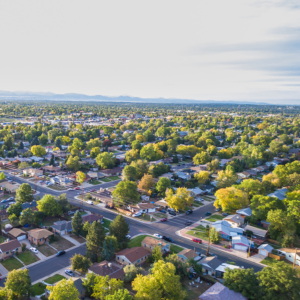
Los Angeles is known for its huge metropolitan landscape, which is made up of many different neighborhoods that show off the city’s many sides. The charm of Los Angeles comes from the fact that each area has its own mix of culture, history, and life. To really get to know Los Angeles, residents and visitors need to know the important traits and cultural dynamics of these districts. Los Angeles is a big city with a lot of interesting neighborhoods. From busy city centers to quiet suburbs, there are a lot of things to see and do that will interest anyone who visits.
Key Characteristics of Los Angeles Communities
The neighborhoods in Los Angeles are as different as the individuals that live there. The historical evolution, cultural demography, and geographical position of each community all have a role in how it is different from others. For instance, Echo Park is a neighborhood noted for its artistic vibe and colorful paintings that show how creative the people who live there are. Beverly Hills, on the other hand, is full of luxury and exclusivity. It has expensive estates and high-end shopping streets. Newcomers and long-term inhabitants alike need to know about these qualities in order to get about the city’s diversified geography.
The architectural styles and layouts of Los Angeles communities are also different from each other. There is a unique aesthetic beauty in each location, from the mid-century modern residences in Silver Lake to the Spanish Revival architecture in Hancock Park. The geographical spread of the institution and residential frameworks across hills, valleys, and coastal areas affects everything from property values to community services.
Demographics have a big impact on what makes up different communities in Los Angeles. Koreatown and Chinatown are two places where different cultures come together. You can see the influence of immigrant populations in everything from food to cultural events. Every year, these communities hold events that bring people from all around Los Angeles County to commemorate their past and give them a taste of their unique cultural identity.
The economy of each community also affects what makes it unique. Silicon Beach, which includes seaside communities like Venice and Marina del Rey, has become a center for tech startups and other new businesses. This has brought in a young labor that helps the local economy thrive. By knowing how these economic factors affect the city, those who want to move there can choose neighborhoods that meet their lifestyle and career goals, making sure they fit in with the wide range of communities in Los Angeles.
Cultural Insights and Local Attractions in Los Angeles, CA
Los Angeles’ cultural landscape is a rich tapestry woven with a diverse set of influences, making it one of California’s most lively cities. Each area provides unique cultural insights, with local attractions reflecting the locals’ heritage and traditions. For example, the Downtown Arts District’s vivid street art offers a raw and edgy artistic culture that appeals to both creative minds and tourists. This neighborhood exemplifies Los Angeles’ history of cultural rebirth, with once-industrial buildings transformed into vibrant creative hubs.
Residents and visitors can immerse themselves in Los Angeles’ rich cultural diversity by visiting the city’s many local attractions. Griffith Park, one of North America’s largest urban parks, is set in the hills of Los Angeles and boasts various hiking paths, equestrian sports, and the historic Griffith Observatory, which offers panoramic views of the city. These attractions not only provide recreational activities, but also function as cultural landmarks, connecting people to the city’s natural beauty and rich history.
Neighborhoods like Santa Monica, with its renowned pier and thriving coastal community, provide even more cultural activities. Visitors can participate in a variety of activities that demonstrate Southern California’s love of the seaside and outdoor entertainment. The vibrant promenade showcases street entertainers, one-of-a-kind stores, and enticing culinary experiences that encapsulate the laid-back yet cosmopolitan character of Los Angeles coastal living.
Los Angeles’ cultural energy is further demonstrated by its numerous museums and theaters. The Getty Center has an excellent art collection and is noted for its gorgeous architecture and grounds, whereas the Hollywood Bowl is a famous outdoor site for concerts and events that provide entertainment under the stars. These venues and events not only reflect the city’s cultural richness, but also encourage community engagement, as Angelenos and visitors alike congregate to celebrate the arts, history, and various communities that make Los Angeles a cultural hotspot unlike any other.
At Eazy House Sale, we buy houses in West Covina and other areas, offering a fast, hassle-free sale with no delays or financing issues.
Navigating Los Angeles by Zip Codes
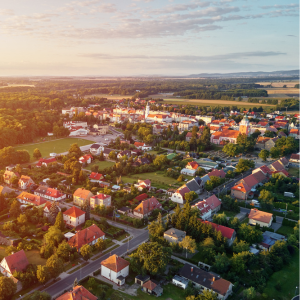
Understanding the landscape of Los Angeles through its zip codes provides a more nuanced way to explore the city. Each zip code in Los Angeles County represents a different territory teeming with various neighborhoods and communities. As residents and visitors travel through these zip codes, they discover distinct cultural vibes and amenities tailored to each location. The intentional use of zip codes facilitates navigation in this sprawling metropolis, making it easy to find favorite destinations or commute more effectively. In the next discussion, you will learn about the benefits of knowing zip codes for various places.
Benefits of Knowing the Zip for Specific Areas in Los Angeles, CA
It’s not enough to just remember Los Angeles zip codes; you also need to really comprehend how the city is laid out and how different areas are connected. Every zip code is like a unique tapestry of communities, each with its own personality and perks for those who live there and visit. For instance, those who know the zip codes in their area can quickly find places that are good for eating, shopping, or cultural events. In a metropolis as big as Los Angeles, knowing how zip code boundaries separate various experiences makes things easier and more efficient, allowing people to focus their travels or settle down securely in places that fit their lifestyle demands.
Los Angeles zip codes are also very important for real estate. Zip codes are important to people who want to buy or rent a home because they show property values and neighborhood features. For example, a zip code can give you an idea of what kinds of residences are available, such modern condos in downtown Los Angeles or classic bungalows in Silver Lake. Knowing the zip code of a community might help you make smart choices about where to live or invest. Also, because each section of Los Angeles County has its own demographic profile, zip codes can provide people an idea of how communities work, which can help them choose places that fit their social and cultural tastes.
Businesses also benefit greatly from knowing the city’s zip codes, in addition to inhabitants and people who could migrate there. Knowing the zip codes of different districts can help companies find high-demand locations and adjust their marketing strategy to those areas. This is especially useful for firms that want to reach certain client groups or grow. For instance, a business that sells eco-friendly products can find a good market in neighborhoods that care about the environment and are identifiable by certain zip codes. In logistics, understanding zip codes helps companies plan the best delivery routes and service locations, which makes customers happier by making things go more smoothly.
Also, zip codes are very important for running the city and providing public services in Los Angeles. Knowing these standards helps with municipal planning, emergency services, and the distribution of public utilities. This makes sure that resources are fairly and efficiently distributed throughout areas. When people and government agree on what zip codes mean, it helps the town grow and get better services. In today’s world, which is based on data, zip codes may be used to look at trends, keep an eye on population changes, and solve local problems in a way that makes them an essential part of city life.
Navigating Los Angeles by zip code makes exploring the city easier. Each code represents unique neighborhoods, helping residents and visitors plan routes. For more information, Contact Us at Eazy House Sale.
District Highlights and Hidden Gems in Los Angeles, CA
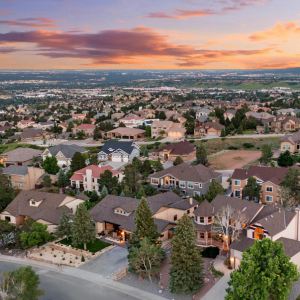
Los Angeles is a metropolis where each neighborhood has its own unique way of life. For example, downtown is busy, while less-known neighborhoods are quiet. You can learn about the city’s lively spirit by visiting well-known neighborhoods like Hollywood and Silver Lake. You can also get a taste of the city’s understated beauty by finding hidden jewels. This trip through the district map helps you find both the busy streets and the hidden spots that make Los Angeles unique. People who live in or visit these different areas can see the many cultures, traditions, and ways of life that make up LA.
Exploring Popular Districts in Los Angeles
Hollywood and downtown Los Angeles are two of the city’s most recognized neighborhoods. They provide visitors from all over the world a taste of what it’s like to live there. Hollywood is not just home to movie stars, but it is also a busy neighborhood with a lot to see and do. The Hollywood Walk of Fame is a great way to see the stars, and the famous TCL Chinese Theatre is a great place to see the extravagant premieres. But Hollywood isn’t just about famous people; it’s also home to a lively local scene. Residents here can eat at a wide range of restaurants, go out at night, and visit cultural sites like the Hollywood Bowl, which has amazing open-air concerts.
The downtown area, which lies east of Hollywood, has a mix of old-world beauty and new development. The skyline is mostly made up of skyscrapers, although there are some well-preserved landmarks like the Bradbury Building and the Los Angeles Central Library. The Walt Disney Concert Hall and the Broad Museum are two of the many attractions in downtown, which is a center for business, dining, and the arts. The Grand Central Market and other markets in the district sell food from all over the world, showing how diversified the city’s food scene is.
Silver Lake’s stylish reputation draws a more bohemian audience to the west. This demographic is recognized for being laid-back and having an artistic flair. There is a lot of creativity in the district, which can be seen in its street art, art galleries, and independent stores. Silver Lake Reservoir is a well-known landmark that makes for a beautiful place to jog or relax. This area is also great for trying new foods, with anything from boutique coffee shops to creative plant-based restaurants.
Each of these well-known districts adds to Los Angeles’ appeal by delivering unique experiences. This is why it’s important for both visitors and residents to explore them to fully understand the city’s diversity.
Uncovering Less-Known Neighborhoods in Los Angeles, California
People all over the world know Los Angeles for its beautiful neighborhoods like Hollywood and Beverly Hills. But the city’s less famous areas are just as interesting, delivering a quieter but nonetheless rich experience. Atwater Village, which is along the Los Angeles River, is one of these hidden gems. This lovely neighborhood has a welcoming, community-focused vibe and a growing number of independent stores and restaurants. You may probably find folks at the Sunday farmers’ market or relaxing in one of the area’s numerous parks, such the beautiful Griffith Park nearby. Atwater’s small-town feel and city conveniences provide for a balanced way of life for its residents.
Leimert Park, a historic enclave further south, is a cultural center for Los Angeles’ African American community. Leimert Park is known for its lively music and arts scene, and it hosts live shows and events that commemorate cultural heritage. The architecture and places like the World Stage and KAOS Network, which give new artists and musicians a place to show their work, show how rich the neighborhood’s history is. Art shows and community activities are real cultural experiences that encourage people to get involved and explore the area.
As you head near the coast, areas like Mar Vista give you a suburban feel with a coastal breeze. They offer peace and quiet that you might not expect to find so close to the busy city. Mar Vista is a great place for people who want to balance city life with peaceful, family-friendly areas. It has a combination of mid-century architecture and modern conveniences. Outdoor lovers will love how close it is to the ocean and how many green spaces there are. It’s a great place to relax and have fun.
These lesser-known neighborhoods give you a taste of what it’s really like to live in Los Angeles. They are a nice change from the city’s more well-known areas. When you explore these neighborhoods, you find a side of Los Angeles that is full of diversity and community spirit. The understated charm and local culture beckon you to learn more. You can get a fuller picture of Los Angeles’s many sides by including these neighborhoods in your visit.
Need to sell your home? Want to sell fast, skip repairs, and enjoy a hassle-free process? Eazy House Sale can help. We provide fair cash offers, manage every detail, and ensure a smooth transaction. Ready to sell or have questions? Call (855) 915-1382 for a no-obligation cash offer today.
FAQs:
Why Are Neighborhood Maps Important for Exploring Los Angeles?
Neighborhood maps provide vital insights into district boundaries, enhancing navigation and enabling visitors and residents to explore and appreciate the city’s unique cultural, historical, and geographical diversity.
How Do District Boundaries Impact Los Angeles Residents?
District boundaries impact local governance, community identity, and public services. They affect everything from school districts and voting precincts to community planning and economic strategies.
Why is It Useful to Understand the Zip Codes in Los Angeles?
Understanding zip codes aids navigation, real estate decisions, and offers insights into neighborhood demographics and economic characteristics, simplifying exploration and enhancing community engagement.
How Do Technological Advancements Affect the Use of Los Angeles Maps?
Technological advancements like digital maps enhance navigation and planning with real-time data, interactive features, and GPS, offering a modern way to experience the city’s diverse neighborhoods.
What Are Some Notable Hidden Gems in Los Angeles Neighborhoods?
Hidden gems like Atwater Village, Leimert Park, and Mar Vista offer unique cultural vibes and community spirit, providing a quieter alternative to the city’s famous districts while still reflecting Los Angeles’ diverse identity.
Helpful Los Angeles Blog Articles
- Sell Your House Directly To The Bank In Los Angeles, CA
- Best and Worst Neighborhoods in Los Angeles, CA
- Los Angeles, CA Neighborhood Map
- Fun Facts About Los Angeles, CA
- Los Angeles, CA Property Tax Rate
- Best Los Angeles, CA Property Managers
- Free Things to Do in Los Angeles, CA
- Los Angeles, CA Cost of living
- Los Angeles, CA Closing Costs Calculator
- Selling Old House in Los Angeles, CA
- What Do You Do When You Inherit A House with A Mortgage in Los Angeles, CA
- How Long To Live In A House Before Selling in Los Angeles, CA
